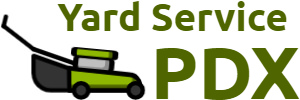Embarking on the journey of maintaining a lush lawn involves understanding the landscape of how much lawn care services cost. The expenses associated with these services can vary widely depending on several factors such as the size of your lawn, the type of services you require, region, and the frequency of maintenance. For instance, a one-time service like aeration may cost between $50 to $200, while regular mowing can range from $30 to $80 per visit, depending on the lawn’s size and terrain.
Another essential aspect to consider is the expertise and reputation of the service provider. Highly experienced landscapers with a proven track record might charge more, but the investment often aligns with the quality of work and the longevity of your lawn’s health. Moreover, the type of equipment used, whether it’s standard or state-of-the-art, can also impact the overall cost.
It’s crucial to note that opting for a full-service lawn care plan might initially seem expensive, but it can be cost-effective in the long run. Such plans often include a variety of services like mowing, edging, fertilization, and pest control, providing comprehensive care that keeps your lawn in top shape year-round.
Contact us today to discover how our landscaping services can transform your property! Visit yardservicepdx.com and let us help you navigate the costs effectively while ensuring your lawn remains an enviable green haven.
Factors Influencing Lawn Care Service Costs

When assessing how much lawn care services cost, it’s imperative to consider the multitude of factors that influence pricing. The size of the property is a primary determinant, as larger lawns require more time, labor, and materials, which naturally increases the cost. Additionally, the condition of the lawn plays a role; a well-maintained lawn will generally be less costly to upkeep compared to one that requires extensive rehabilitation.
Geographical location is another significant factor, as prices can vary greatly by region due to differences in the cost of living and the local competition. Urban areas with a higher density of landscaping businesses might offer more competitive rates, while rural areas might have higher travel costs factored in.
Seasonality also affects pricing since certain times of the year demand more frequent and intensive lawn care services. For example, spring and fall cleanups can be more labor-intensive and thus may be priced higher. The type of grass and landscaping details such as gardens, trees, and hardscapes can further complicate the care needed and increase service costs.
Finally, the choice between regular maintenance contracts or on-demand services will influence the overall expense. Long-term contracts can provide cost savings and consistent care, which might be more economical than one-off services that can have variable pricing depending on immediate lawn needs.
Average Prices for Common Lawn Care Services

Understanding the average prices for common lawn care services is crucial for homeowners and property managers looking to maintain their outdoor spaces effectively. Generally, lawn mowing services can range from $30 to $80 per visit, depending on lawn size and frequency of service. A complete lawn treatment that includes fertilization, weed control, and pest management might cost between $40 and $70 per application, with the number of treatments varying throughout the year.
When it comes to aeration, which is essential for a healthy lawn, prices typically fall between $75 to $200, influenced by lawn size and soil condition. For seasonal services like spring or fall cleanups, including debris removal and preparing the lawn for the coming season, homeowners could expect to pay from $200 to $500.
Additional services such as tree trimming, hedge shaping, or garden care will also add to the cost. Tree trimming, for instance, may cost anywhere from $250 to $500 per tree, depending on the tree’s size and accessibility. For landscaping projects that include design and installation of new features, costs can escalate into the thousands, highlighting the importance of a detailed quote based on specific property needs.
It’s worth noting that these prices are estimates and can vary widely based on individual service providers, the complexity of the job, and regional cost variations. Nonetheless, they serve as a helpful baseline for budgeting and negotiating with lawn care professionals.
Additional Costs to Consider in Lawn Maintenance

Beyond the basic service fees, there are additional costs to consider in lawn maintenance that can affect the overall budget. One of the main factors is the condition of the lawn. If a lawn has been neglected and requires extensive rehabilitation, such as reseeding, sod installation, or disease treatment, costs can increase significantly. Reseeding a lawn, for instance, might cost between $90 to $180 for a 1,000 square foot area, while sod installation can range from $1 to $2 per square foot.
Irrigation system maintenance is another area where homeowners might incur extra expenses. Seasonal servicing, repairs, or upgrades to an existing system are essential for efficient water management and lawn health, with servicing costs typically starting around $50 and going up based on complexity.
Landscaping enhancements like mulching, which can improve soil health and curb appeal, can also add to the bill. Mulching costs on average $100 to $300 for a standard-sized garden, depending on the type of mulch used and the area covered.
Finally, it’s important to factor in the frequency of services required. A lawn that needs weekly maintenance will naturally accrue higher annual costs compared to one that requires bi-weekly or monthly services. Additionally, properties with unique features such as steep slopes, decorative elements, or hard-to-reach areas may face higher charges due to the increased labor required.
All these considerations emphasize the importance of a thorough evaluation and clear communication with your lawn care provider to ensure that you are aware of all potential costs associated with maintaining a pristine lawn.
Tips for Saving on Lawn Care Without Sacrificing Quality
While lawn care can be a significant investment, there are strategic ways to save on lawn care without sacrificing quality. One of the most effective methods is to compare quotes from multiple service providers. Gathering several estimates can provide a clearer picture of average costs and help secure more competitive rates.
Another tip is to opt for a seasonal contract rather than paying for individual visits. Service providers often offer discounted rates for clients who commit to a season-long partnership, as it guarantees steady work for them and consistent care for your lawn.
Homeowners can also take on some maintenance tasks themselves. Basic lawn care activities such as mowing or simple garden upkeep are manageable for many and can reduce the frequency and thus the cost of professional services. However, it’s crucial to balance DIY efforts with professional care to ensure the lawn’s health is not compromised.
Choosing native plants and grasses is another cost-effective strategy. These species are adapted to the local climate and soil conditions, which means they require less water, fertilizer, and overall maintenance, leading to long-term savings.
Finally, investing in a quality irrigation system can lead to substantial savings over time. Smart irrigation systems, for instance, optimize water usage based on weather conditions and soil moisture levels, ensuring that water is used efficiently and reducing waste and excess costs.
By implementing these tips and maintaining a balance between professional services and personal care, homeowners can maintain a healthy and beautiful lawn while keeping costs in check.
Making the Most of Your Lawn Care Investment

Contact us today to discover how our landscaping services can transform your property! To make the most of your lawn care investment, consider the long-term health and aesthetics of your outdoor space. It begins with selecting the right service provider; look for those with strong credentials, positive customer reviews, and a commitment to eco-friendly practices. This ensures that your lawn is in capable hands and that you’re contributing positively to the environment.
Regular communication with your lawn care provider is also critical. Setting clear expectations and staying informed about the services being performed can help tailor the care to your lawn’s specific needs, resulting in more effective treatment and better resource allocation.
An often overlooked aspect of maximizing lawn care investment is soil testing. Understanding the nutrient profile of your soil can save money in the long run, as it allows for a more targeted approach to fertilization and treatment, avoiding unnecessary or excessive applications.
Furthermore, embracing a proactive approach to lawn care by addressing issues early can prevent minor problems from escalating into more costly ones. For instance, early weed control can eliminate the need for extensive interventions later on.
Lastly, consider the benefits of technological advancements in lawn care. From automated mowing systems to advanced irrigation setups, investing in technology can lead to significant savings in time and money while enhancing the quality of care your lawn receives.
Making informed decisions and utilizing the right strategies can significantly enhance the value of your lawn care investment. Remember, a well-maintained lawn not only boosts curb appeal but also increases property value, making it a wise investment for any homeowner.
Contact us today to discover how our landscaping services can transform your property!
